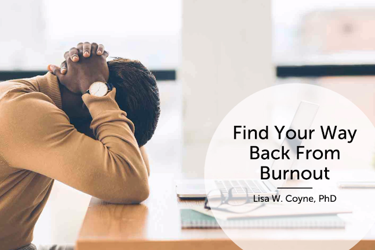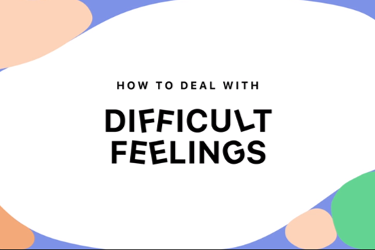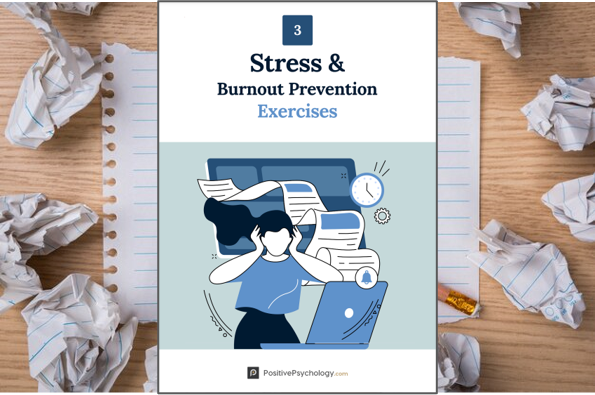
Breaking Free From Stress
How to Conquer Stress and Beat Burnout

In today’s fast-paced and demanding workplaces, the prevalence of stress-related issues is on the rise. It’s important to acknowledge that stress itself isn’t necessarily a bad thing. In fact, it can be a motivating force that drives us to excel, meet deadlines, and adapt to challenges. However, when stress becomes overwhelming and persistent, it can lead to chronic stress and ultimately burnout. This shift from manageable stress to burnout can have serious consequences for our physical and mental health, as well as our overall job satisfaction and productivity.
This resource will help you better understand stress and burnout. Our goal is to equip you with the knowledge and tools needed to manage and mitigate the negative impacts of these stressors effectively and to help you regain your overall well-being and enhance your personal and professional life.


Stress Versus Burnout
Understanding the difference between stress and burnout is crucial for maintaining mental well-being. The ability to recognize causes and symptoms empowers you to implement coping strategies, fostering resilience and preventing long-term negative consequences.

Find Your Way Back From Burnout
Lisa W. Coyne, PhD, provides tips on how to detect early signs of burnout, offers ways to lower our daily stressors, and answers audience questions about how to fight back from feeling burned out.

Burnout Self-Test
Understanding your current level of stress is the first step in taking control. This tool helps you assess potential burnout by examining your feelings about your job and work experiences, giving you insight into whether you’re at risk.

Though we can’t just make stress disappear with a wave of a wand, we’ve got the next best thing – arming ourselves with effective tools and strategies to manage it. When we’ve got the right coping mechanisms in our toolkit, we’re better equipped to navigate stress and support our mental well-being. These tools don’t just help us dodge the negative impacts of stress; they also supercharge our ability to bounce back from those tough moments, steering clear of burnout territory. The resources below will help you…
- Explore diverse strategies for bouncing back from stress and burnout
- Understand the significance of self-care as a pillar in stress management support

Strain to Strength
When it comes to stress and burnout, recovery and prevention is the key. Explore practical coping strategies to effectively manage these challenges and foster well-being.

The Cure for Burnout
Authors of Burnout: The Secret to Unlocking the Stress Cycle discuss the importance of dealing with stress separately from dealing with the cause, and how to use your body to accomplish that.

How to Live Stress-Free in a Stress-Filled World
Discover effective techniques to reclaim a sense of calm with practices such as mindful breathing exercises, gentle movement, and soothing sound therapy.

Bounce Back from Burnout in 3 Steps
Allan Ting his personal experience with burnout, which led him on a quest to understand work-life balance and how to bounce back from a place of too much stress.

Understanding how to effectively deal with and manage stress is a great skill, but there is value in looking at how we can prevent stress from taking over in the first place. The best way to handle stress is to be proactive so we can be prepared for situations that typically cause us stress and effectively manage them to get ahead of stress before it takes over. The resources below will help you…
- Effectively foster a healthy work-life balance
- Recognize the importance of support systems for maintaining well-being amid stress
- Understand the value of shifting your perspective and learn practical ways to make that change

Power of Perspective
Better understand how your outlook and interpretation of situations play a crucial role in shaping your stress levels. By adopting a positive and adaptive perspective, you can effectively navigate challenges, reduce stress, and mitigate the risk of burnout.

3 Prevention Exercises
Enhance your personal and professional development with three evidence-based, practical exercises designed to 1 – Strengthen your work-private life barrier, 2 – Assess your current energy levels, and 3 – Assess your stress-related growth.

How to Manage Your Worries
Worrying too much can lead to stress. Check out this strategy to help you embrace healthy thoughts, and manage your worries effectively to prevent them from taking over.





